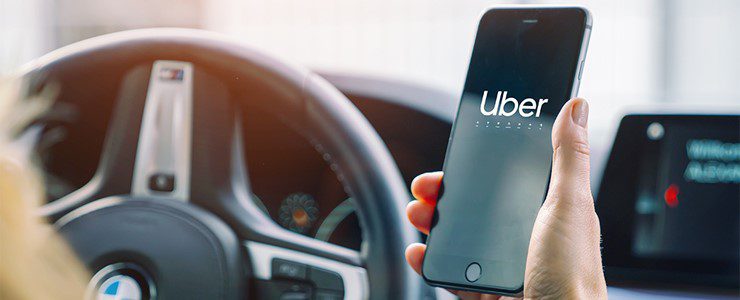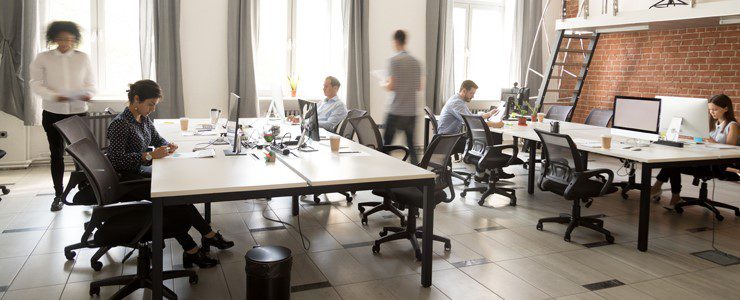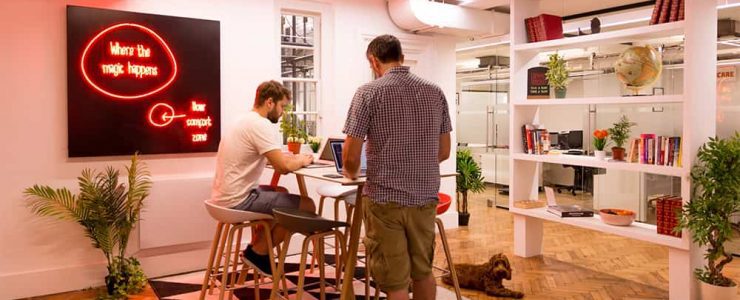
How Uber started in a coworking space
The founders of Uber have amassed a combined fortune of $5.8 billion since developing and launching their innovative business idea in a coworking space in 2009.
Garrett Camp and Travis Kalanick have earned an incredible $3.1 billion and $2.7 billion respectively in just a decade!
They came up with the idea for the now world-famous ride-sharing service due to their dissatisfaction with San Francisco’s transport system. Working from a local coworking space, they began to explore ideas for a new type of transport company, after Camp spent $800 hiring a private driver to get around the city.
Today, Uber is known worldwide, with operations in more than 785 metropolitan areas across the globe. The company has more than 22,000 employees and has expanded into food delivery with its Uber Eats service. In the United States in 2019, Uber had a 67% market share of ride-sharing.
How did Uber begin?
Los Angeles-born Kalanick, 43, studied business economics and computer engineering at the University of California. He launched his first business, Scour, an online file-exchange service, while still a student. He dropped out of university in 1998 to work full-time at his startup.
Camp, 41, was born in Calgary, a city in the province of Alberta, in Canada. In 2001, he graduated with a bachelor’s degree in electrical engineering from the University of Calgary and went on to complete a master’s degree in software engineering.
Like his future business partner, Camp also founded his first business, web discovery platform Stumble Upon, while still a student in 2002. He relocated the company to San Francisco in 2006 and the following year, Stumble Upon was included in Time magazine’s list of the 50 Best Websites. He sold it to eBay for $75 million in 2007.
Kalanick started a new company, Red Swoosh, a peer-to-peer file-sharing venture, in 2001. After Akamai Technologies acquired the company in 2007 for $19 million, Kalanick eventually joined forces with fellow entrepreneur Camp to mull over ideas for a new business venture in 2009 and Uber was the result.
Where was Uber developed?
Uber was developed in a coworking space operated by Rocket Space in San Francisco. Kalanick and Camp were personally tired of the city’s taxi problems, leading to the thought processes behind Uber.
Kalanick later credited Camp with coming up with the original concept, although they developed the company together. They created an Uber app which passengers use to order a ride when they are quoted the fare. Prices can vary according to supply and demand at the time. Payment is made at the start of the ride by the customer’s preferred method – such as a credit card, PayPal, Apple Pay, Google Pay, or cash.
At the end of the journey, the passenger can choose to tip the driver. Passengers also have the option to rate the driver. Any drivers classed as “below average” can be banned if they continually receive low ratings and don’t improve their behaviour.
What other services does Uber offer?
Uber Eats food ordering and delivery services were launched in 2014. The online platform began expanding into foreign markets, including the UK, using virtual restaurants, sometimes known as cloud kitchens. These are kitchens which prepare and deliver food for delivery-only restaurants – they don’t offer a dining room or a walk-in service.
Boasting revenue of $1.46 billion, Uber Eats had tripled its workforce in its European markets by November 2018. Making food deliveries in 200 cities across 20 countries, it began delivering food to customers via drones in the summer of 2019.
What does the future hold for Uber?
In May this year, Uber reported losses of almost $3 billion as a result of the COVID-19 pandemic shutting down its ride-sharing arm. At the time, the company said Uber Eats looked to be the way forward, as CEO Dara Khosrowshahi said they had seen a surge in food delivery during the crisis.
He believed the ride-sharing service would improve again once the economy began to open back up. Uber says it has the financial resources to ensure its “core rides and eats businesses” will emerge from the current crisis stronger than before.
Safe working environment
Headspace Group offers affordable coworking environments to help startups develop and grow, with office space in London, Manchester, Marylebone, Farringdon, Belfast, Southampton and Birmingham.
Hygiene is crucial as a result of the COVID-19 pandemic and our dedicated in-house cleaning division spends more than 150,000 hours per year cleaning our centres, with continual day and night schedules in place.
For more information about our co-working environments, please contact us on 0800 953 0585 or take a look at our website.
© Alexander Kirch / Shutterstock.com



